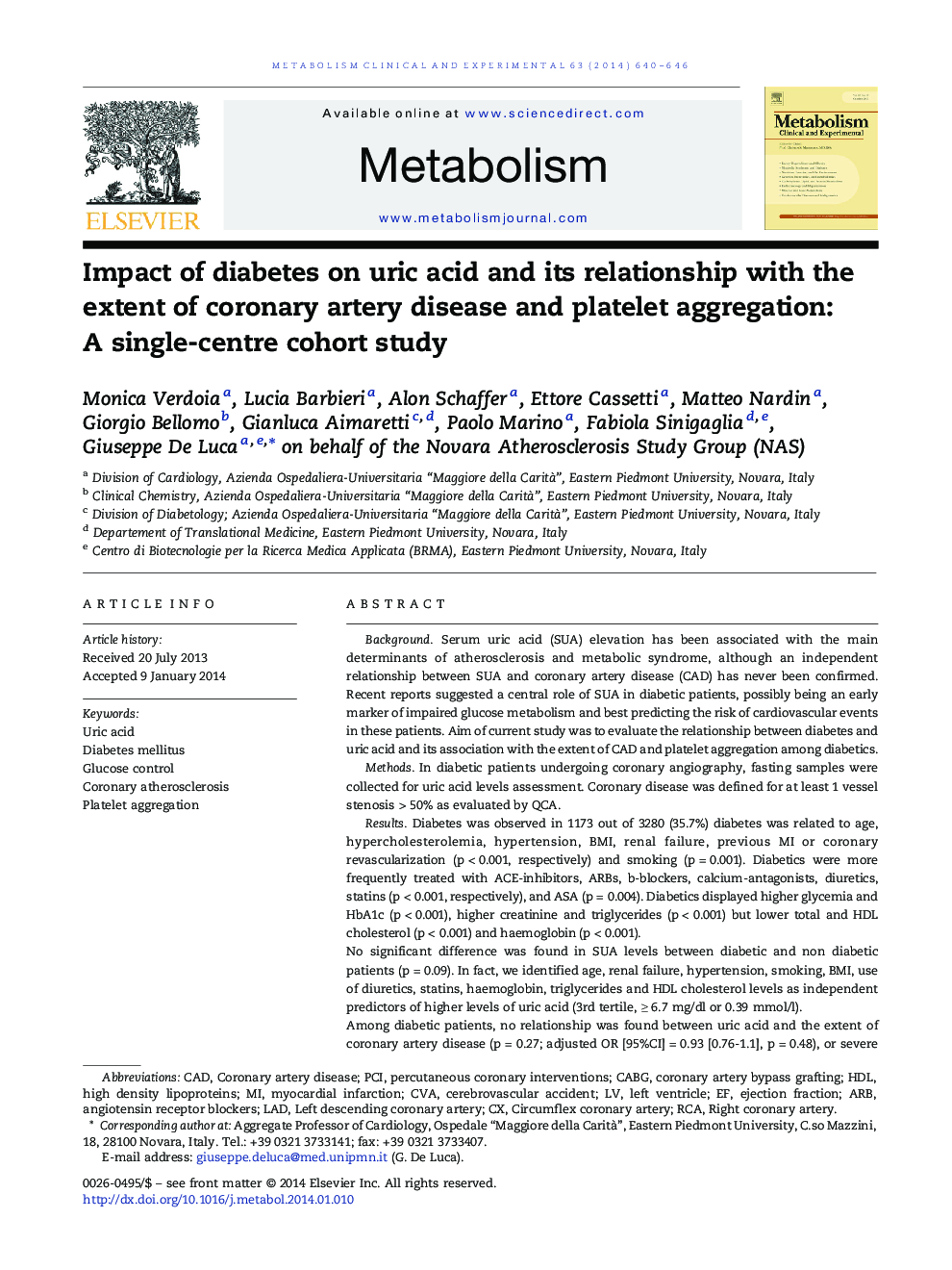| Article ID | Journal | Published Year | Pages | File Type |
|---|---|---|---|---|
| 2805824 | Metabolism | 2014 | 7 Pages |
BackgroundSerum uric acid (SUA) elevation has been associated with the main determinants of atherosclerosis and metabolic syndrome, although an independent relationship between SUA and coronary artery disease (CAD) has never been confirmed. Recent reports suggested a central role of SUA in diabetic patients, possibly being an early marker of impaired glucose metabolism and best predicting the risk of cardiovascular events in these patients. Aim of current study was to evaluate the relationship between diabetes and uric acid and its association with the extent of CAD and platelet aggregation among diabetics.MethodsIn diabetic patients undergoing coronary angiography, fasting samples were collected for uric acid levels assessment. Coronary disease was defined for at least 1 vessel stenosis > 50% as evaluated by QCA.ResultsDiabetes was observed in 1173 out of 3280 (35.7%) diabetes was related to age, hypercholesterolemia, hypertension, BMI, renal failure, previous MI or coronary revascularization (p < 0.001, respectively) and smoking (p = 0.001). Diabetics were more frequently treated with ACE-inhibitors, ARBs, b-blockers, calcium-antagonists, diuretics, statins (p < 0.001, respectively), and ASA (p = 0.004). Diabetics displayed higher glycemia and HbA1c (p < 0.001), higher creatinine and triglycerides (p < 0.001) but lower total and HDL cholesterol (p < 0.001) and haemoglobin (p < 0.001).No significant difference was found in SUA levels between diabetic and non diabetic patients (p = 0.09). In fact, we identified age, renal failure, hypertension, smoking, BMI, use of diuretics, statins, haemoglobin, triglycerides and HDL cholesterol levels as independent predictors of higher levels of uric acid (3rd tertile, ≥ 6.7 mg/dl or 0.39 mmol/l).Among diabetic patients, no relationship was found between uric acid and the extent of coronary artery disease (p = 0.27; adjusted OR [95%CI] = 0.93 [0.76-1.1], p = 0.48), or severe (LM-trivessel) CAD (P = 0.05; adjusted OR [95%CI] = 1.01 [0.86-1.18], p = 0.94). Furthermore, SUA levels did not influence platelet aggregation.ConclusionAgeing, BMI, renal failure, hypertension, smoking, use of statins and diuretics, haemoglobin, HDL cholesterol and tryglicerides levels but not diabetes or glycemic control are independent predictors of hyperuricemia. Among diabetic patients, higher SUA is not independently associated with the extent of CAD or with platelet aggregation.
